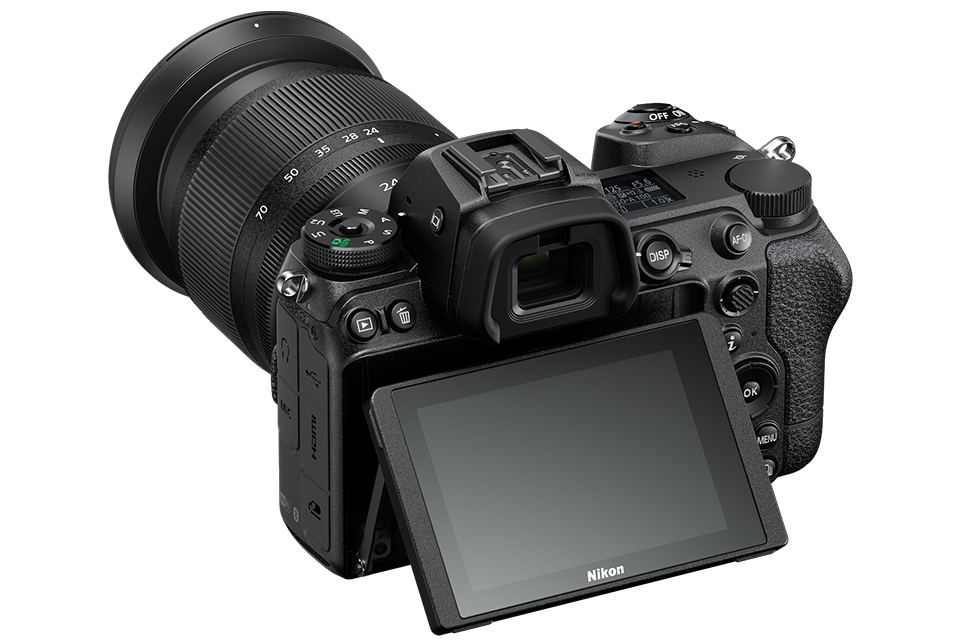The Nikon Z-Series of mirrorless cameras represents a paradigm shift from the DSLR camera technology, bringing stellar video quality within easy grasp of users. The Nikon photographers network is a great place to learn the basic and fine elements of the art of photography by keeping abreast with technology and trends, and updating your skills as a photographer or videographer. Read on as we explain some of the basics of full-frame mirrorless camera technology such as what you get with the Z-Series from Nikon.
What is a Mirrorless Camera?
The term mirrorless can be a little confusing as there are a number of camera types that don't have mirrors but are not generally referred to as ‘mirrorless cameras’. An example being point-and-shoot cameras. The term mirrorless camera recently came into use and basically refers to digital interchangeable lens cameras (ILCs) that, unlike DSLR cameras, do not have any mirror. In DSLR cameras, mirrors are responsible for bouncing light to the optical viewfinder. Mirrorless cameras or Compact System Cameras (CSC), on the other hand, are digital cameras that can work with different lenses and do not need a mirror to bounce light to the viewfinder, instead it uses an advanced Electronic Viewfinder (EVF).
Why to Invest in a Mirrorless Camera?
- Electronic Viewfinder - DSLR cameras come with optical viewfinders that sometimes fail to present an accurate image of what you are about to capture. The electronic viewfinders on mirrorless cameras, on the other hand, give you an incredible view of your captures. The Nikon Z 6II, for instance, has a 1.27-cm/0.5-in. 3690k-dot (Quad VGA)
- Exceptional Video Quality - Videographers looking to get high quality video can never go wrong with mirrorless cameras. The latest mirrorless cameras make use of a hybrid autofocus technology, which is faster than what you get with DSLRs, making them ideal for capturing videos of moving subjects. Also, the lens construction, featuring elements such as silent focusing and controlled focus breathing, is optimal for movie recording.
- Better Low-Light Performance - Thanks to improved autofocus performance and wider lens mounts (compared to DSLR cameras), mirrorless cameras promise notably superior low-light performance. In fact, the latest models from the Nikon Z Series come with low light autofocus for both stills and videos, which used to be the historic edge carried by DSLR cameras.
- Easy Usage and Portability - Perhaps the most obvious reason why many photographers and videographers today prefer mirrorless cameras is their less-bulky nature when compared to DSLRs. Traditional DSLR cameras, especially full-frame models, could be a pain to carry, especially when working for extended periods. Mirrorless cameras, on the other hand, offer a much lighter and smaller alternative.
- Faster Focus Tracking- The AF system on mirrorless cameras gives you the freedom to compose exactly what you want and the way you want. You can take advantage of hundreds of focus points across the frame or use auto-tracking to automatically choose focus points according to the position of the subject in the frame.
- Reliability - They are dust and drip-resistant and offer the robustness to support any professional photographer. Body is made up of magnesium alloy. You can expect consistent and outstanding manufacturing technology.
The Last Word
Mirrorless cameras have a number of advantages over DSLRs. You can shoot stills or video, make easy adjustments on the fly without taking your eyes off the subject, enjoy superior autofocus performance, and make stunning UHD 4K videos. Join the Nikon photographers network to polish your mirrorless camera skills,
submit your work to get it featured, be a part of our
online workshops, and get useful
Nikon tips and techniques. You can also
become a Nikon premium member to receive a range of exclusive benefits.


